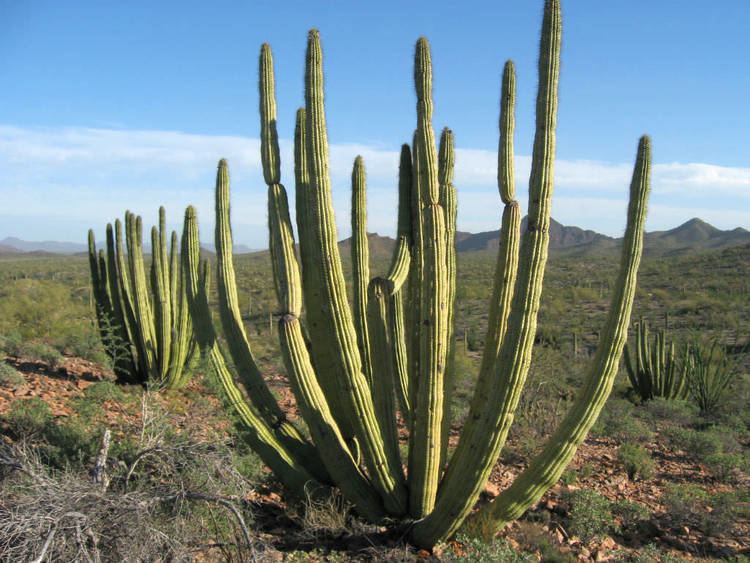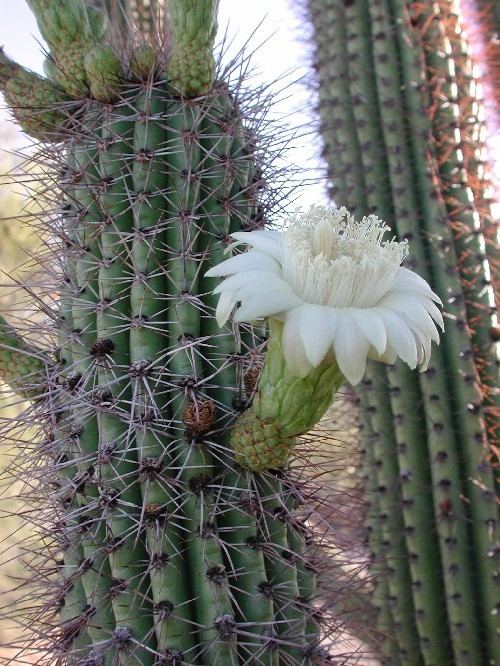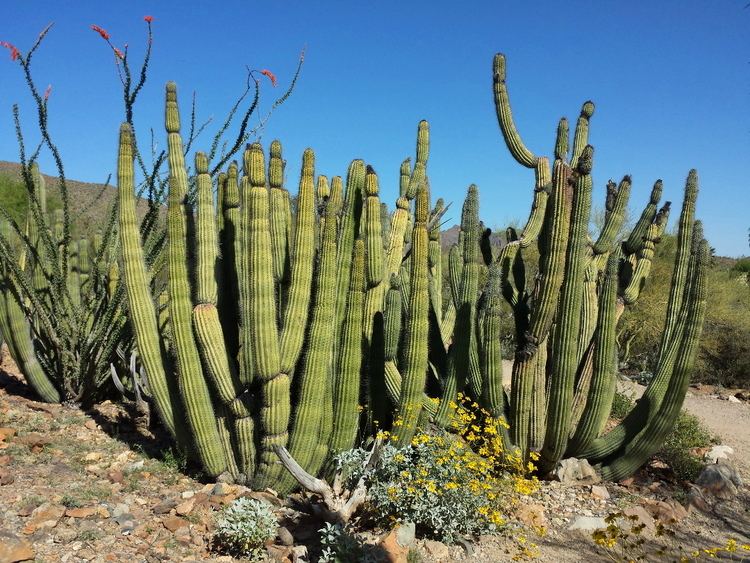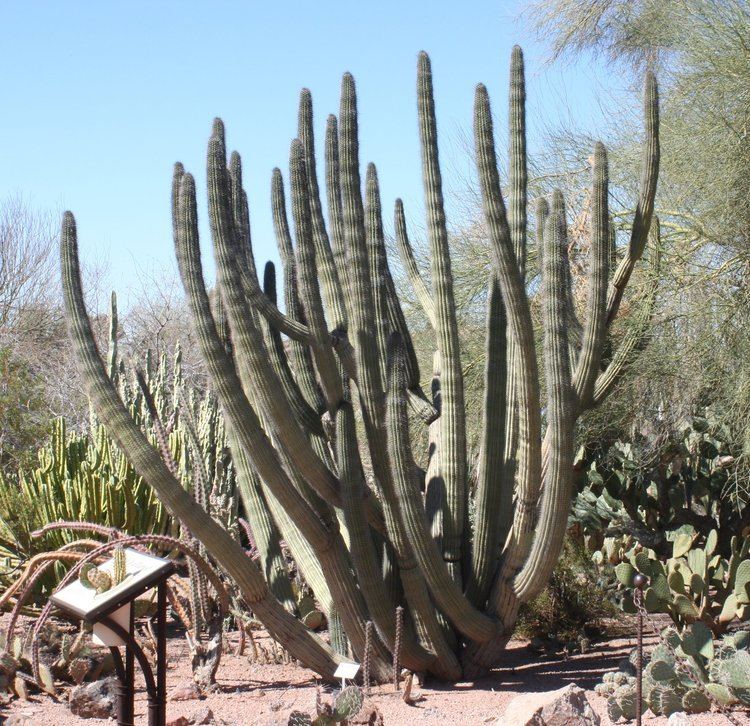Higher classification Stenocereus | Family Cactaceae Tribe Pachycereeae Scientific name Stenocereus thurberi Rank Species | |
 | ||
Similar Cactus, Stenocereus, Pachycereus, Pachycereus schottii, Pachycereus pringlei | ||
Cactus stenocereus thurberi organ pipe cactus
Stenocereus thurberi, the organpipe cactus, is a species of cactus native to Mexico and the United States. The species is found in rocky desert. Two subspecies are recognized based on their distribution and height. The Organ Pipe Cactus National Monument is named for the species.
Contents

Its English common name is derived from its resemblance to a pipe organ. It is locally known as pitaya dulce, Spanish for "sweet pitaya" or sweet cactus fruit.

Description
This cactus species has several narrow stems that rise vertically, growing from a single short trunk just above the ground level. These stems are about 6 inches (15 cm) thick and grow to a height of 16 feet (4.9 m), however it has been known to reach 23 to 26 feet (7.0 to 7.9 metres). These stems rarely branch but rather grow annually from the tip of the last growth. The mature plant can reach a width of 12 feet (3.7 m). Each stem has 12 to 19 1⁄3 inch (0.85 cm) high ribs that bear dark brown to black spines that turn gray as it matures. It takes 150 years to reach maturity. The older plants produce three-inch (8 cm) funnel-shaped white flowers annually which are open at night and close by the morning and have a purple or pink tint to them. These usually grow during April, May, and June. The organpipe cactus is usually pollinated by bats. The plant also produces fruit about the size of a tennis ball. Beneath the fruit's spiny exterior is red flesh that has been described as tasting better than watermelon. This fruit has traditionally been harvested by the Seris, who call the plant ool [oːɬ], and is used as a medicine.
Distribution

This species is found mostly in Mexico, mainly in Sonora and southern Baja California. It is also known to the United States, but is much rarer, with the notable exception of Organ Pipe Cactus National Monument. The plant is predominantly found on rocky hillsides up to 3,000 feet (910 m) in elevation. It is sensitive to frost, so the species is rare in low desert areas, which can be more susceptible to frost. The plant is slow growing, and prefers well-drained soil and full sun. However, when in the seedling stage, it requires shade, and will grow beneath a "nurse tree". It will need this for several years until it grows an adequate root system, which is mostly in the upper 10 cm of soil.
Subspecies

There are two recognized subspecies, the type subspecies, thurberi, is much larger and occurs in southern Arizona, mainland Mexico, and Northern Baja California. The other is littoralis, which is much smaller and usually grows to around 10 feet (3.0 m). It occurs only in southern Baja California.

